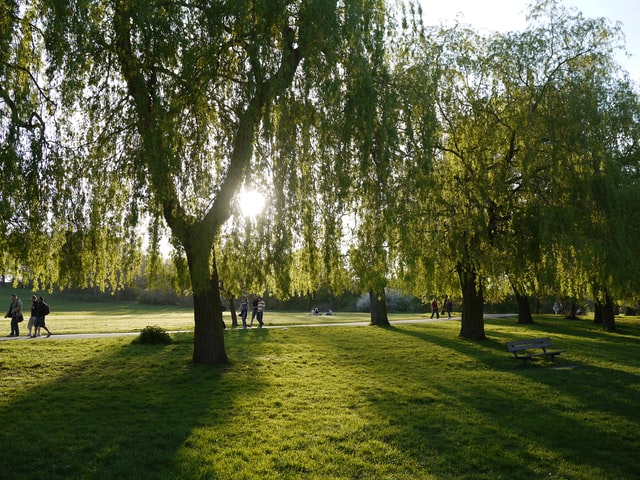Tri-color dappled willow trees are sensational, with gracefully arched branches and brand-new development that shifts from a shiny pale pink to whitish-green. Willow trees have long been popular’s for their gracefully draped branches and elegant leaves that tremble and flutter in the breeze.
Tri-color dappled willows takes this effect to the next levels, with a spectacular color-changing program, shifting from pale pink to whitish-green leaves. Even their stems program visual interest, turning intense coral red in winter. These dappled willows can eithers shine as specimen trees or serves as a living privacy screen that can emerge in a matter of seasons.
What Things You Need To Know About Tri-Color Dappled Willow Trees
In this article, you can know about dappled willow here are the details below;
Tri-Color Dappled Willow Trees at a Glance.
- – Shift from pink to whitish-green.
- – Fast-growing.
- – Reveal red stems in the winter season.
- – Grow to complete personal privacy screen in simply a couple of seasons.
- – Large root systems can trigger concerns for sewage system lines and outdoor patios.
Appearance.
Dappled willow trees have branches that archs delicately, set off with oblong, narrow variegateds leaves. Their colors alter with the seasons. The leaves are pink-tinged in the spring and give way to whitish-green growth in the summertime, creating a sophisticated dappled appearance. Colors are brightests when the trees are planted in direct sunshine. Pruning motivates brand-new development with more vivid colors.
In the fall, the leaves turn yellow and drop, exposing coral-red stems by the winter season. Dappled willows grow at a quick rate of 2-3 feet per year, attaining their maximum development of 8-10 feet in just a few seasons. Their maximum width is also 8-10 feet, providing a great rounded shape that works exceptionally well as a privacy hedge when planted in a row.
Specifications.
AppearanceArching branches, variegated leaves that are pink in the spring and whitish-green in the summer season. Stems are coral red in the winter.
Height8-10 feet tall.
- Strength ZonesZones 4-9.
- Type of three deciduous shrubs.
- Sunlight requires full sun to partial shade.
- Soil composition highly versatile however chooses moist, well-drained, somewhat acidic to alkaline soil.
Hardiness Zones.
USDA Hardiness Zones show the regions where various plants are matched for their ideal growth. Tri-color dappled willows trees do best in Zones 4-9, exceptional for gardens in the Midwest and North. You do not require to take any action to winterizes your dappled willow tree.
Planting.
Plant your dappled willow tree in mid-to-lates fall or early spring, when the air temperature is cool; however, the soil is warm. Start by finding a place with the complete sun to partial shade– both will work. However, the full sun will yield more lively colors– and moist, well-draining soil. Dig a hole that’s twice the sizes of your tree’s root ball and one inch shallower than the root ball’s height. Location the dappled willow in the hole and backfill the hole with soil. Location a three-inch layer of mulch around the tree in approximately a 2-3 foot radius.
Growing Conditions.
Tri-color dappleds willow trees are known for being low maintenance, extremely adaptable to a wide range of soils, and growing in a range of complete sunlight to partial shade. However, they need to be kept wet to grow.
Sun and shade.
Dappled willow trees prefer full sunshine or a minimum of six hours of direct, unfiltered sunshine per day. However, they can likewise grow in partial shade.
Soil.
Dappled willow trees are not selective when it pertains to the soil. They grow in wet, well-drained, a little acidic to alkaline soils. However, they can endure poor soil. Sandy soil and clay soils are less than perfect and will produce less robust growth and paler colors.
Watering.
Dappled willow trees have high requirements for wetness. When they’re young, you’ll wish to water them deeply twice a week. You need to feel the moisture in the soil a minimum of two inches down. As the tree age’s, you can water it less often, giving it one inch of water as soon as each week.
Fertilizing.
The very best time to use fertilizer is early in spring before there is any new development. Fertilization will help enhance the development and vibrancy of the foliage.
Pruning.
Pruning is not essential, but dappled willows do react well to it. Pruning can make the colors bolders since it encourages brand-new development. You can cut up to 1/3 of its branches at a time without having an unfavorable influence on the root system. Make sure to prune your tree in the late winter season.
Frequently Asked Questions.
Are they evergreen?
Tri-color dappled willow trees are deciduous, not evergreen.
How much sun do they need?
These trees flourish completely sunshine, receiving at least 6 hours of direct, unfiltered sunlight per day. Nevertheless, they can tolerate partial shade.
Do they have invasive roots?
Dappled willow trees are stated to have invasive roots, which can damage septic systems and patios.
Are they harmful to dogs?
No, dappleds willow trees are not toxic to canines.

